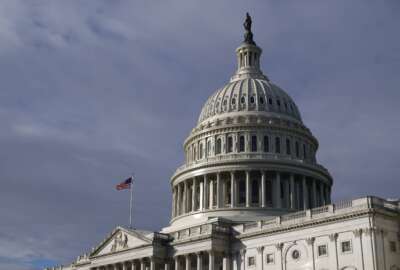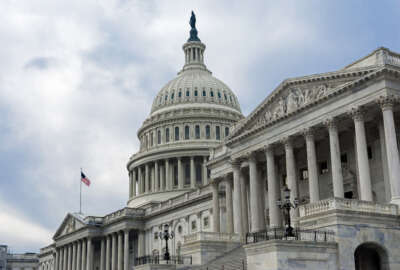Partnership for Public Service charts course for civil service reform, rejects Schedule F
A new vision for civil service reform from the Partnership for Public Service calls for holistic modernization of government, rather than “burning it down."
Many federal stakeholders have agreed there is a need for some type of civil service reform. But when it comes to defining the right path for a governmental shift, the range of perspectives is vast.
For the Partnership for Public Service, a non-profit, non-partisan organization, the best way forward for agencies hinges on five key areas: developing better government leaders; making federal hiring and retention easier; holding poor performers accountable; making better use of data and technology; and ensuring efficient federal services to the public.
The new vision for government the Partnership released Thursday comes in sharp contrast to the strategies laid out by former Trump administration officials in the Heritage Foundation’s Project 2025. In particular, the Partnership’s document on civil service reform rebukes the controversial Schedule F.
The Schedule F executive order from the Trump administration aimed to create a new classification of federal employees that could be more easily fired, but President Joe Biden rescinded the order before agencies could implement it. Proponents of Schedule F said the goal was to address poor performance in government. The executive order, though, received strong pushback from many good government groups who said it was an attempt to politicize the career federal workforce.
With the possibility of Schedule F’s revival in a potential future Trump administration, the Partnership warned of deleterious effects the changes would have on federal operations and services.
“A federal workforce filled with employees hired for their political beliefs rather than their skills and qualifications would move us further away from the type of government the public deserves,” the Partnership wrote in its civil service reform vision. “It would strip federal agencies of expertise and hamper their ability to provide good service to everyone, not just to those who support the president of the day.”
While saying that Schedule F is not the answer, the Partnership maintained that poor performance at agencies is certainly still a concern. It pointed to results of the 2023 Federal Employee Viewpoint Survey, where more than 40% of respondents said poor performers stayed in their jobs and continued to underperform.
“The current process for addressing poor performers in government is difficult for managers and confusing for workers, leading to a lack of accountability for government employees who do not carry out their roles and responsibilities effectively,” the Partnership wrote. “It is important to ensure that federal employees cannot be fired for politically motivated or unjust reasons, but there are ways to update and simplify the current system that would make it easier to remove poor performers.”
In contrast to Schedule F, the vision recommended an entirely different approach to addressing the problem of poor performance. The Partnership said managers and supervisors should closely evaluate new hires in their first year on the job. And in cases where a new employee isn’t meeting expectations, agencies can take steps to address the issue early on. Depending on the circumstances, that can involve anything from offering the fed more job training, to terminating the employee.
More civil service reform plans from the Partnership
Accountability of poor performers is just one of five areas included in the Partnership’s civil service reform plans. Another pillar focuses on better development of federal leadership. While effective federal leaders are central to a functioning government, the Partnership said major reforms are necessary to ensure agencies have that foundation.
Those reforms could include, for instance, reducing the number of political appointees and improving the hiring process for career members of the Senior Executive Service, according to the Partnership.
The problem is particularly time-sensitive, as the challenges of confirming senior political leadership have worsened over time. The Senate confirmation process has taken almost three times as long for President Joe Biden’s nominees, compared with nominations made decades ago during the George H.W. Bush administration.
The Senior Executives Association has been a major advocate of placing more career SES members in leadership roles, as well as introducing reforms to the SES as an institution.
“It is a national imperative to ensure the government is preparing and supporting our leaders and managers, so they can effectively lead people and manage organizations,” SEA President Marcus Hill said in a statement. “For too long, leaders across government have been too unintentional about developing and nurturing a strong cadre of public service executives. This has to be a top priority to improve government including addressing bureaucratic culture.”
The Partnership’s civil service reform vision also centers on better use of technology, improving federal services to the public and reforming federal hiring. The goal of improving federal recruitment, for one, has been challenged by a slow hiring process and ineffective hiring assessments. But to address the issues, the Partnership said agencies can work on adding opportunities for early-career talent and transitioning to more skills-based hiring.
Focusing on the entire five-pronged strategy for civil service reform, the Partnership said, could also help improve the public’s declining trust in government. Research earlier this year from the Partnership found that just 23% of Americans trust the federal government — an 11% decline since 2022.
“We know government agencies at every level have their work cut out for them in winning back the public’s trust, and it’s so important that they do,” Terry Gerton, president and CEO of the National Academy of Public Administration, said in a statement. “The Partnership’s vision is an important step towards showing all Americans that government can efficiently provide the quality of service they deserve — and that they pay for.”
Copyright © 2025 Federal News Network. All rights reserved. This website is not intended for users located within the European Economic Area.
Drew Friedman is a workforce, pay and benefits reporter for Federal News Network.
Follow @dfriedmanWFED






